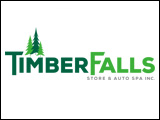The director the of the Winnipeg based National Centre for Foreign Animal Disease says developed nations need to take a more active role in disease surveillance in the poorer regions of the world in order to stop the spread of emerging diseases faster.
The Global Picture of Zoonotic Disease Outbreaks was among the topics examined yesterday as part of the 2010 Banff Pork Seminar.
National Centre for Foreign Animal Disease director Dr. Soren Alexandersen, while the H1N1 pandemic has not been as severe as had been feared on the public health side and has not been severe at all on the swine side, it has been an exercise in diseases that affect both animals and humans and has clearly increased awareness.
Many of these new infections start out in the poor part of the world where they simply don’t have the resources to find these infections early on.
Then they will spread from there and they will become a huge problem in other parts of the world that will then detect the infection and will start dealing with it.
But the real problem often started in poor settings and that’s where we need to focus and that’s where we need to help.
We need to help those places in doing surveillance, the surveillance for diseases that we may think that they have or may even be looking for pathogens that we don’t know about yet but which we, from a theoretical point of view, from what we know from the history, what is going to be most likely to be the next pathogen and we have to test for that out in the world where it might happen before it happens.
Dr. Alexandersen says, from a laboratory perspective, one of the key lessons learned is the need to have lab capacity in place to do testing to quickly detect new pathogens and how to be prepared.
He says we have the resources in our part of the world but it’s really in the part of the world that do not have the resources that many of these problems start so we have to be able to share knowledge, to share technology and we have to help them with resources.
Source: Farmscape.Ca



